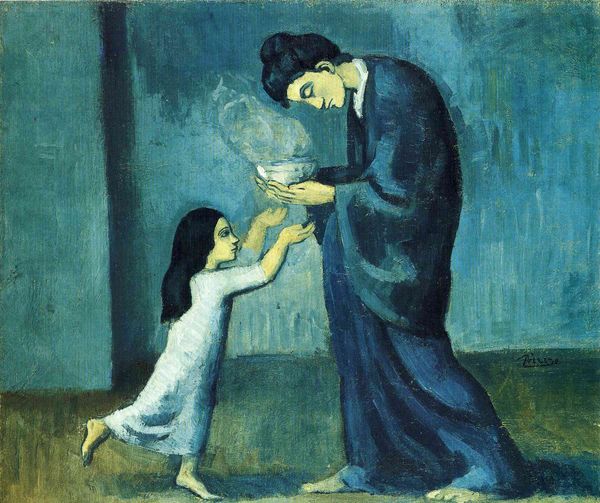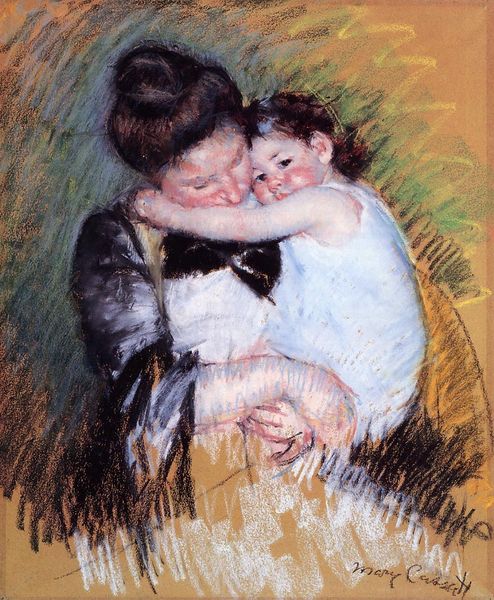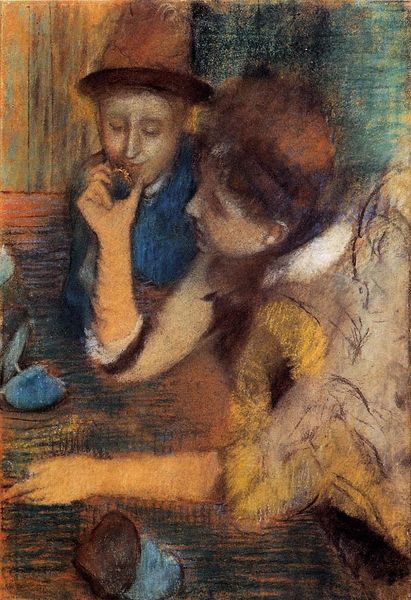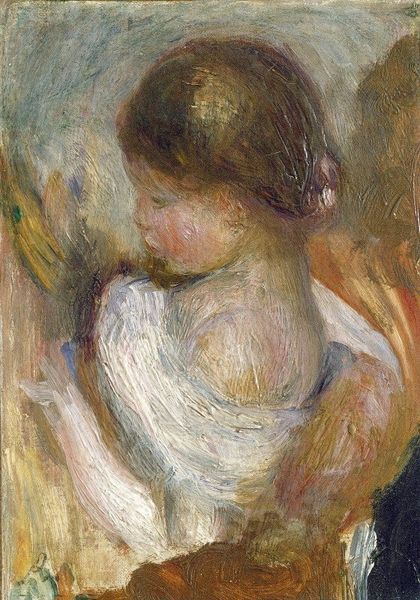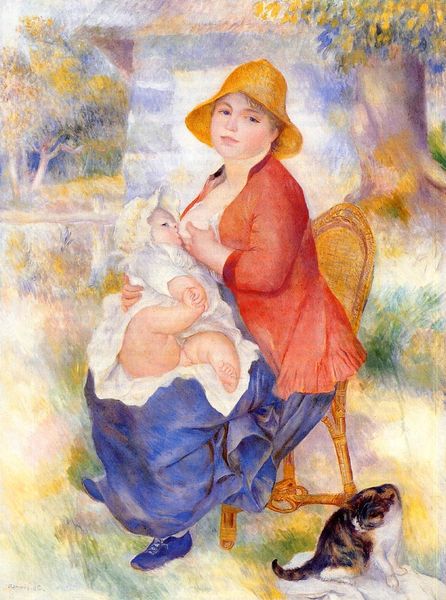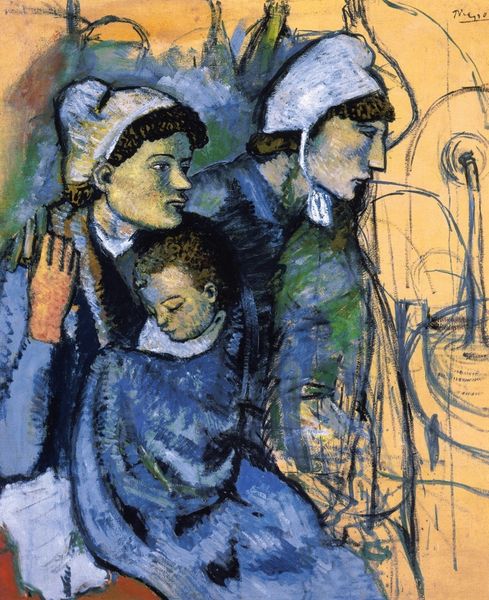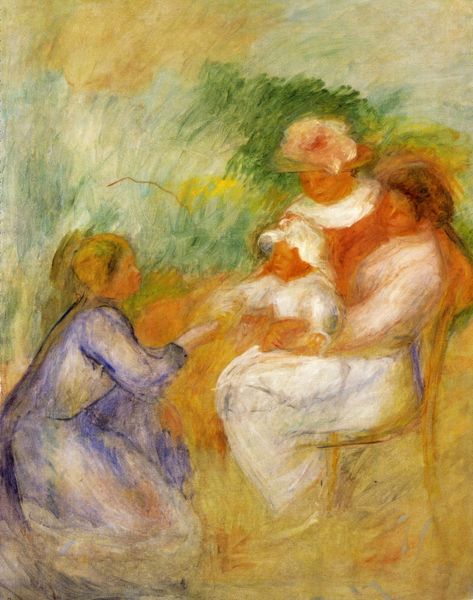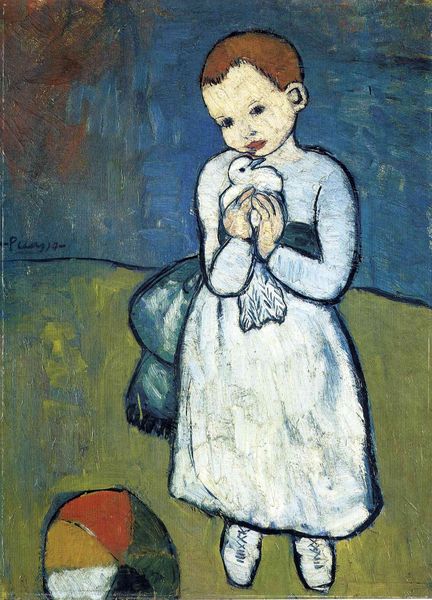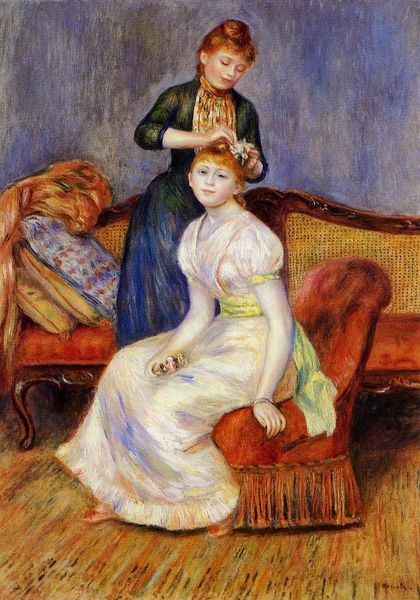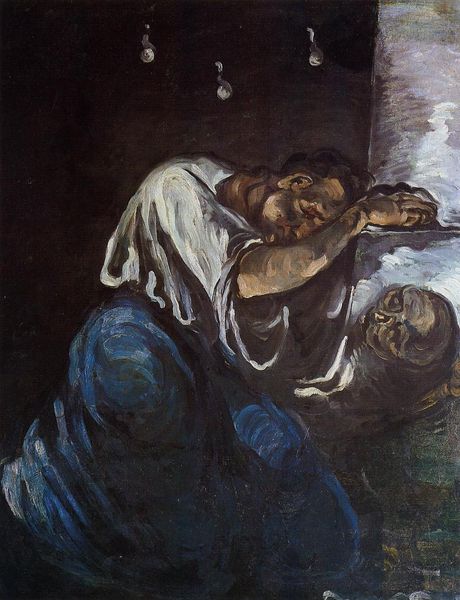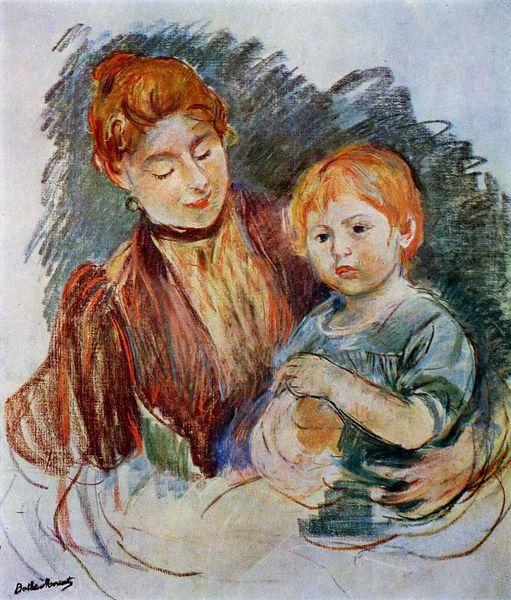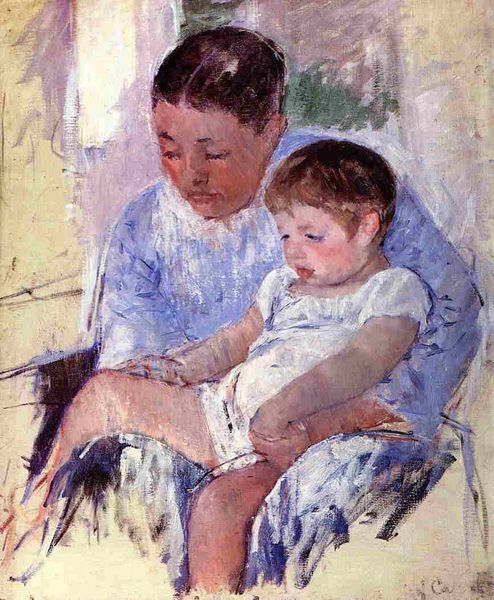
painting, oil-paint, impasto
#
portrait
#
cubism
#
painting
#
oil-paint
#
figuration
#
oil painting
#
impasto
#
expressionism
#
genre-painting
#
portrait art
Dimensions: 175 x 99.7 cm
Copyright: Public domain US
Curator: Let's discuss this 1906 oil painting, “Hairdressing”, by Pablo Picasso. It's a piece that shows the intimate act of women tending to their hair with a child seated close by. What impressions does this scene evoke for you? Editor: It feels quiet, almost somber. The palette is muted, all browns and creams, and that touch of blue—it’s like looking at a memory fading at the edges. A rather introspective artwork; does it convey its historical context, or more? Curator: Absolutely. "Hairdressing" was created during Picasso's early period, a time marked by his engagement with social themes. We have to remember Paris at this time; consider how modern life shaped his art. Editor: And perhaps this reflects those broader anxieties? This is more intimate than some social document, I think, but I'd imagine a struggle in finding beauty in even simple domestic gestures, a very tender take indeed. Curator: True, that resonates, and his use of impasto does create a certain earthiness to the overall portraiture. This technique would come to define Picasso. He builds his picture plane through a unique material presence. Editor: And this materiality certainly gives those intimate feelings such heft. One can just see the textures of hair. Almost a lived thing captured in a moment! So that somberness... it's honest too. An era's truth painted for the future to understand. Curator: Precisely. The muted colors work as a bridge that enables us to think deeply, I mean, and perhaps a mirror held up to contemporary conditions today. So, on that point then? Editor: Right, it’s strange, isn’t it? Something made a century before, so vivid to consider right now, after everything. I will definitely think on this art much more moving forward; thanks!
Comments
No comments
Be the first to comment and join the conversation on the ultimate creative platform.
